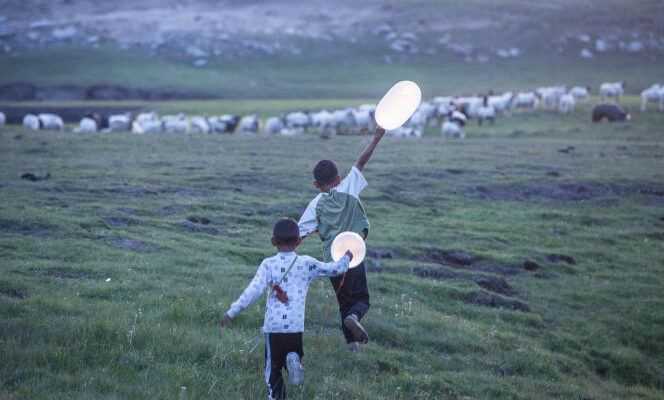THE OPINION OF THE “WORLD” – MUST SEE
After Jinpa, a Tibetan tale (2018), which was a great success in theaters, Balloon is Pema Tseden’s third feature film to be released in France. Born in 1969, the Tibetan filmmaker with a soaring and telluric style was trained at the Beijing Film Academy. Before going behind the camera, he had a first life as a writer, and most of his films are adaptations of his own short stories, extending his poetic universe, as is still the case here.
Balloon takes place in the 1980s, in the remote region of Amdo, in the northeast of the Tibetan sector. The story focuses on a rural family confronted with the one-child policy driven by the central power even in its most distant provinces. Dargye (Jinpa, a tall, gruff fellow familiar from Tseden’s films) and his wife, Drolkar (Sonam Wangmo), sheep herders, already have three children. They secretly use condoms dispensed by family planning, but constantly stolen by their boys who play around like balloons.
The shortage helping, Drolkar does not take long to find herself pregnant, but at the worst moment: when the grandfather dies. While she thought she was having an abortion, Buddhist beliefs on the contrary want her to keep the child, because it is in him that the grandfather would be likely to be reincarnated.
Documentary interest
Balloon thus shows the triple injunction which falls on the body of the peasant woman, coming both from political planning, from religious tradition and from the patriarchy: three strata of power with divergent interests, which at the same time recommend to her to to have and not to have children – enough to go crazy.
These tensions stemming from the administration of biological life, Tseden stages them in a more naturalistic style than usual, carving out his story with the billhook of a shoulder-mounted camera. This in which he perhaps sacrifices the reflexes of a certain international authorism. The dreaminess, infiltrated in such a disturbing way in his previous films, appears here more circumscribed, turning at times to the picturesque (children’s games sublimated in slow motion). So it happens that the film lends itself to an old-fashioned poetry, based on animal metaphors (Dargye compared until more thirsty to a breeding ram for his insatiable libido) and squeezed motifs (the balloons of children who s ‘fly into the sky).
You have 30.99% of this article left to read. The rest is for subscribers only.
